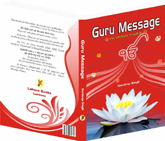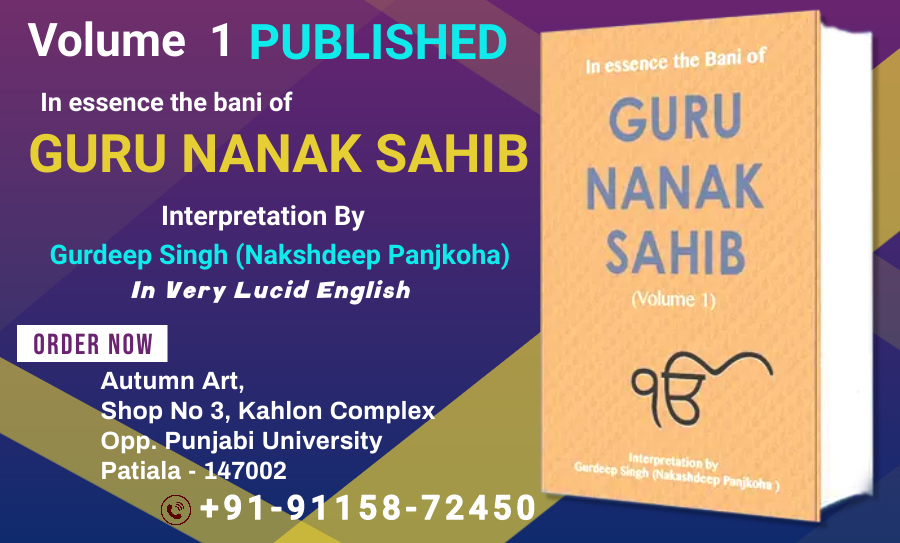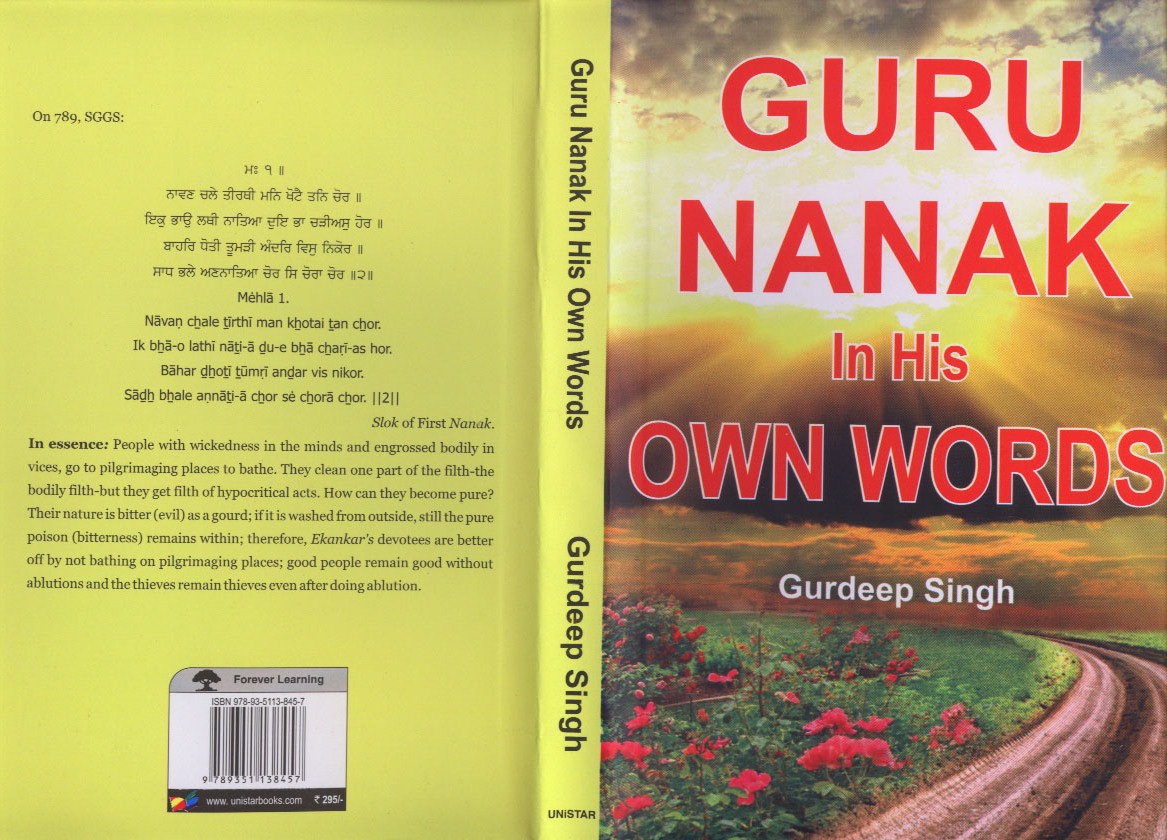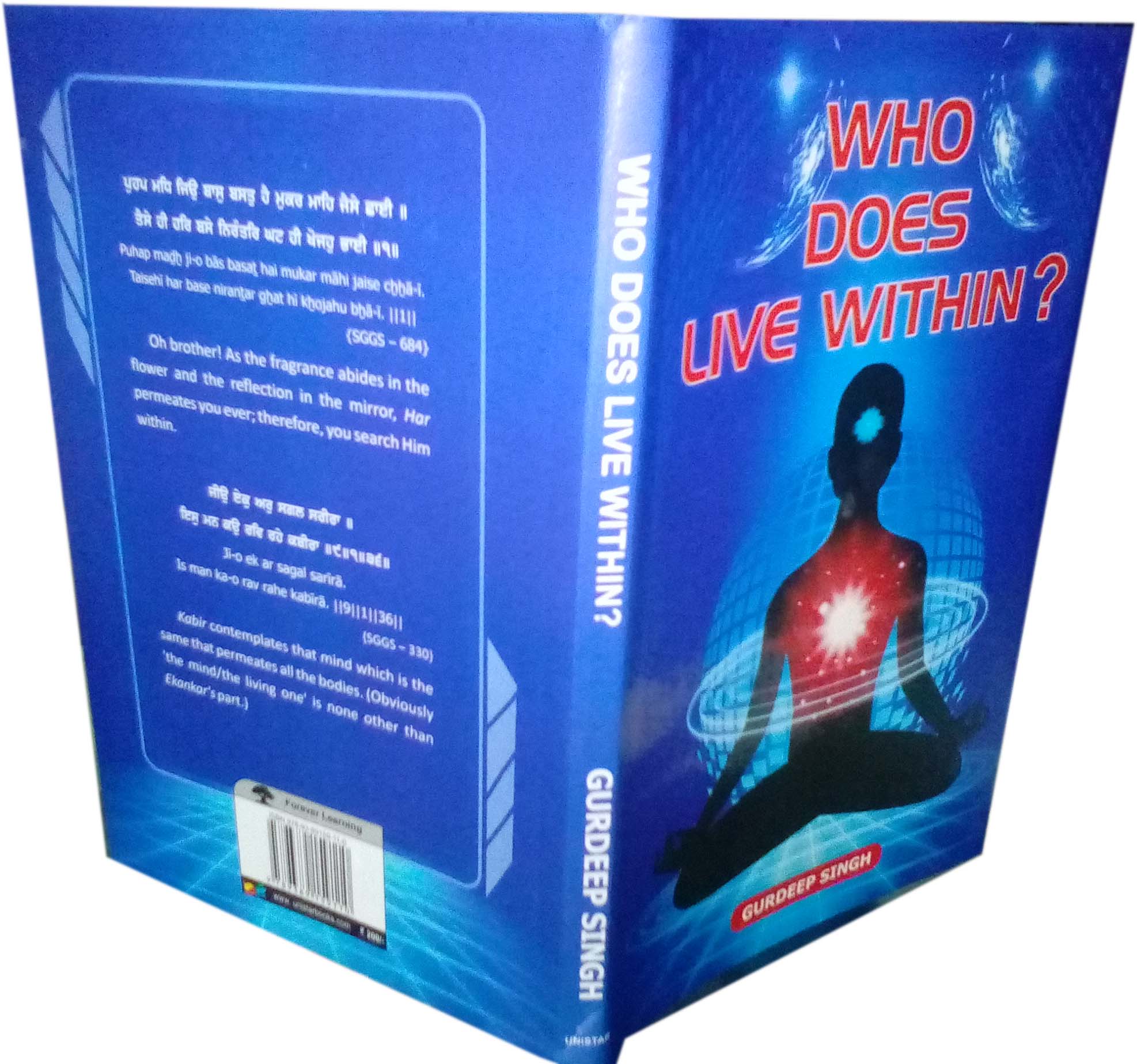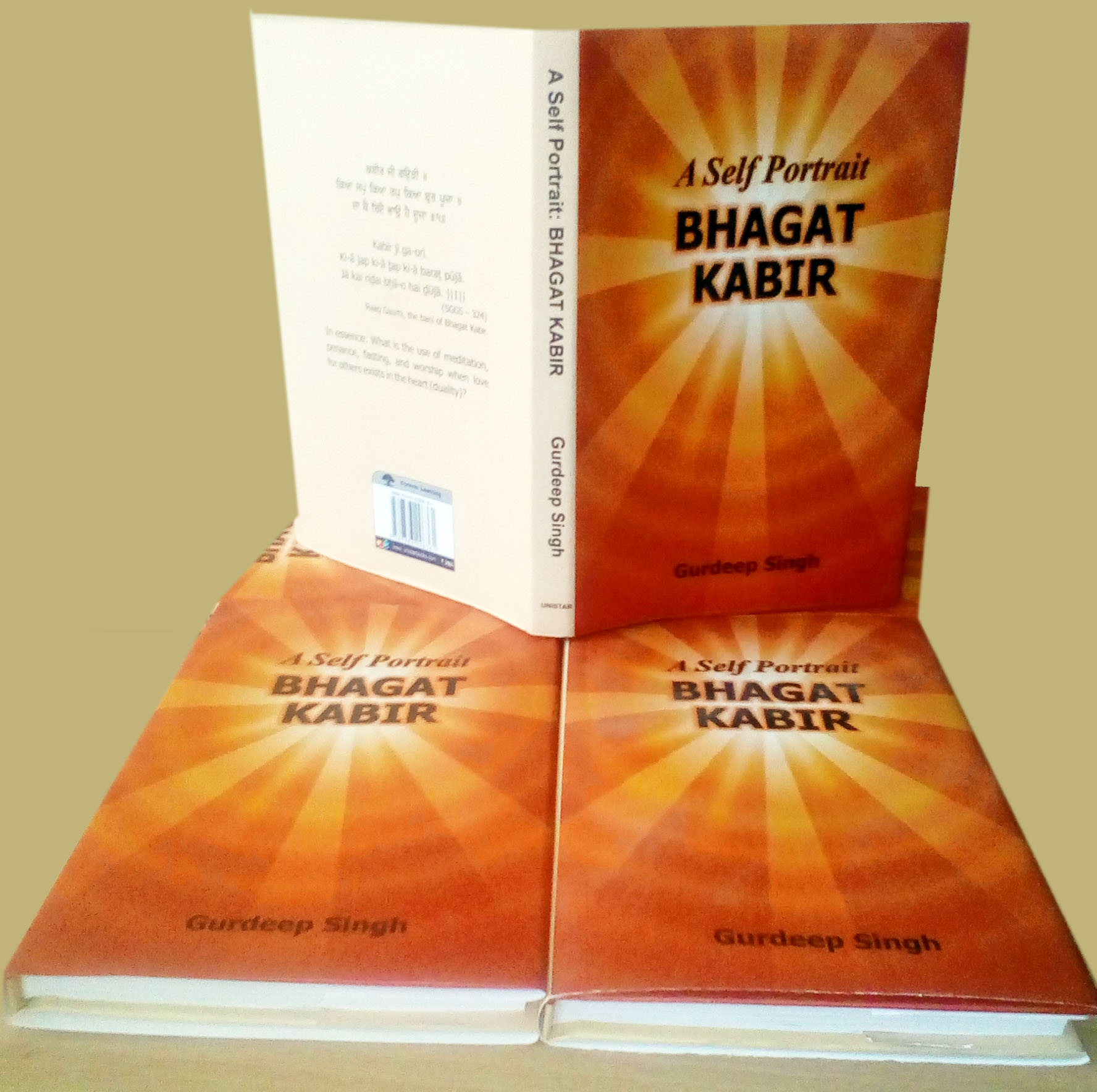For the realm of realizing the inner self to comprehend the reality of the Creator, the divine ones give hints to the new seekers to grasp the fundamental points about the body and the one that remains in it as a witness being totally immaculate. The bani of Sri Guru Granth Sahib helps the new seeker to decipher the difference between the living witness and the one that is involved only in the body and its related world. As we read about the death factor of the body through First Nanak’s perception, it becomes very clear that actually it is the body that dies not the inner self that remains in the body as a witness. Let us go through First Nanak’s bani on 152, SGGS to comprehend this:
ਗਉੜੀ ਮਹਲਾ ੧ ॥
ਪਉਣੈ ਪਾਣੀ ਅਗਨੀ ਕਾ ਮੇਲੁ॥ ਚੰਚਲ ਚਪਲ ਬੁਧਿ ਕਾ ਖੇਲੁ॥
ਨਉ ਦਰਵਾਜੇ ਦਸਵਾ ਦੁਆਰੁ ॥ ਬੁਝੁ ਰੇ ਗਿਆਨੀ ਏਹੁ ਬੀਚਾਰੁ ॥੧॥
Ga-oṛī mėhlā 1.
Pa-uṇai pāṇī agnī kā mel. Cẖancẖal cẖapal buḏẖ kā kẖel.
Na-o ḏarvāje ḏasvā ḏu-ār. Bujẖ re gi-ānī ehu bīcẖār. ||1||
Raag Gaurhi, the bani of First Nanak.
In essence: The body is a union of air, water, and fire; the fickle mind plays in it with its intellect. In it are nine openings and a door known as “the tenth door.” Oh wise man! Reflect on this!
Obviously it is a game played by the mind and its intellect through the body, but even then there is way out of the game the Creator crafted Himself. A hint is given about progressing spiritually to that state in which the “inner self” is experienced and the body attachment becomes insignificant.
ਕਥਤਾ ਬਕਤਾ ਸੁਨਤਾ ਸੋਈ ॥
ਆਪੁ ਬੀਚਾਰੇ ਸੁ ਗਿਆਨੀ ਹੋਈ ॥੧॥ ਰਹਾਉ॥
Kathṯā bakṯā sunṯā so-ī. Āp bīcẖāre so gi-ānī ho-ī. ||1|| rahā-o.
It is Akalpurakh who speaks, teaches, and listens (with His presence within every life). The one who reflects on one’s “inner self” becomes wise (the Knower of the Creator). Pause.
Very important is to understand that there is none out there but Ekankar, the Creator. In the Gurbani, it is stressed that Ekankar/Naam is found within, but one needs to understand first about one’s “inner self”. Usually one remains involved with one’s body. It is expressed that the “inner self” actually acts under the ordinance of the Creator because it is an active part of His light (Jyoti of jyot); however, its status remains detached. When one understands completely how all this is put in work, one also realizes that it is only the Creator, who is staging a show through this world. Without realizing one’s inner self, one remains in the duality through which one fails to recognize the oneness of the Creator and His creation.
ਦੇਹੀ ਮਾਟੀ ਬੋਲੈ ਪਉਣੁ॥
ਬੁਝੁ ਰੇ ਗਿਆਨੀ ਮੂਆ ਹੈ ਕਉਣੁ॥
ਮੂਈ ਸੁਰਤਿ ਬਾਦੁ ਅਹੰਕਾਰੁ॥
ਓਹੁ ਨ ਮੂਆ ਜੋ ਦੇਖਣਹਾਰੁ ॥੨॥
Ḏehī mātī bolai pa-uṇ. Bujẖ re gi-ānī mū-ā hai ka-uṇ.
Mū-ī suraṯ bāḏ ahaʼnkār. Oh na mū-ā jo ḏekẖaṇhār. ||2||
The body is just dust, but it is the breath that is heard sounding (If there is no breath, the body is just the dust). O Wise one! Who has died then (The dust-body becomes dust again and the breath merges with the wind; then who is dead)? The interest in strife, conceit, and Maya has died; however, one who sees all this doesn’t die (Means only the game of one’s (the mind and its intellect) interest in conceit, strife and Maya is ended at one’s death).
The Guru also names the witness, a part of the Creator, that exists in our bodies and that doesn’t die as expressed above. Obviously at a death, only the physical body, which also emanates from the Creator’s manifested/sargun form, crumbles. And, crying for the witness is discouraged in the Gurbani. Read the following to understand “the witnessing part” of the Nirgun/beyond attributes on 1034, SGGS: the Guru is talking about here about a person who enshrines Ekankar’s name within:
ਨਿਰਮਲ ਕਾਇਆ ਊਜਲ ਹੰਸਾ॥
ਤਿਸੁ ਵਿਚਿ ਨਾਮੁ ਨਿਰੰਜਨ ਅੰਸਾ॥
ਸਗਲੇ ਦੂਖ ਅੰਮ੍ਰਿਤੁ ਕਰਿ ਪੀਵੈ ਬਾਹੁੜਿ ਦੂਖੁ ਨ ਪਾਇਦਾ ॥੬॥
Nirmal kā-i-ā ūjal hansā. Ŧis vicẖ nām niranjan ansā.
Sagle ḏūkẖ amriṯ kar pīvai bāhuṛ ḏūkẖ na pā-iḏā. ||6||
In essence: Pure is that body in which dwells the pure soul, and in it abides Ekankar’s name, a part of the immaculate Creator. Such a pure person quaffs (takes) his or her all pains as Ekankar’s given nectar; thus he or she doesn’t suffer again.
To understand the qualities of the inner self, it will be useful to read Bhagat Kabir’s shabda on 871, SGGS in which he illustrates the same witness Guru Nanak has elaborated above in a very subtle way. From the Guru’s point of view, we learn unequivocally about the witness’s existence and departure after the end of the body; Bhagat Kabir doesn’t go in detail as the Guru does; nonetheless, he elaborates on the characteristics of the inner self also well expressed in Guru’s above quoted bani:
ਗੋਂਡ ॥
ਨਾ ਇਹੁ ਮਾਨਸੁ ਨਾ ਇਹੁ ਦੇਉ॥
ਨਾ ਇਹੁ ਜਤੀ ਕਹਾਵੈ ਸੇਉ॥
Gond.
Nā ih mānas nā ih ḏe-o.
Nā ih jaṯī kahāvai se-o.
Raag Gond
In essence: (the one force/light/inner self that exists in the body) it is neither a human, nor a devta. It is not called a celibate or Shiva worshipper.
ਨਾ ਇਹੁ ਜੋਗੀ ਨਾ ਅਵਧੂਤਾ॥
ਨਾ ਇਸੁ ਮਾਇ ਨ ਕਾਹੂ ਪੂਤਾ ॥੧॥
Nā ih jogī nā avḏẖūṯā.
Nā is mā▫e na kāhū pūṯā. ||1||
It is not a yogi or a recluse. It has no mother and it is not a son of anyone.
ਇਆ ਮੰਦਰ ਮਹਿ ਕੌਨ ਬਸਾਈ॥
ਤਾ ਕਾ ਅੰਤੁ ਨ ਕੋਊ ਪਾਈ ॥੧॥ ਰਹਾਉ॥
I-ā manḏar mėh koun basā-ī.
Ŧā kā anṯ na ko-ū pā-ī. ||1|| rahā-o.
Then, who lives in this body house? Actually none has found the end of that one. Pause.
ਨਾ ਇਹੁ ਗਿਰਹੀ ਨਾ ਓਦਾਸੀ॥
ਨਾ ਇਹੁ ਰਾਜ ਨ ਭੀਖ ਮੰਗਾਸੀ॥
Nā ih girhī nā oḏāsī.
Nā ih rāj na bẖīkẖ mangāsī.
It is neither a householder, nor a recluse. It is neither a king, nor a beggar
ਨਾ ਇਸੁ ਪਿੰਡੁ ਨ ਰਕਤੂ ਰਾਤੀ॥
ਨਾ ਇਹੁ ਬ੍ਰਹਮਨੁ ਨਾ ਇਹੁ ਖਾਤੀ ॥੨॥
Nā is pind na rakṯū rāṯī.
Nā ih barahman nā ih kẖāṯī. ||2||
It has no body or a particle of blood. It is neither a Brahman, nor a Khatri
ਨਾ ਇਹੁ ਤਪਾ ਕਹਾਵੈ ਸੇਖੁ॥
ਨਾ ਇਹੁ ਜੀਵੈ ਨ ਮਰਤਾ ਦੇਖੁ॥
Nā ih ṯapā kahāvai sekẖ.
Nā ih jīvai na marṯā ḏekẖ.
It is not called an ascetic or a Sheikh. It neither takes birth, nor is it seen dying.
So far, Bhagat Kabir has made it clear that the inner self that lives in various forms with identified existence is totally immaculate; it shares the body without involving in it save for working as a witness or a help. In the following, he states that crying for its departure from the body is useless; however, we see people crying, but why? According to the Gurbani, its reason is that those who cry for it are unaware of its originality. The Guru says ਮੂਈ ਸੁਰਤਿ ਬਾਦੁ ਅਹੰਕਾਰੁ ॥ ਓਹੁ ਨ ਮੂਆ ਜੋ ਦੇਖਣਹਾਰੁ ॥੨॥ means only one’s strife and conceit come to an end as the body dies but not the inner self, because the entire show is not what we see; instead it is: ਪਉਣੈ ਪਾਣੀ ਅਗਨੀ ਕਾ ਮੇਲੁ ॥ ਚੰਚਲ ਚਪਲ ਬੁਧ ਿਕਾ ਖੇਲੁ ॥ It is a game set up by making a body and placing in it the mind and its intellectual capacity. Thus the game must be understood: the game is: the body is constructed with five elements; to keep it alive, the breath is used to support it; however, the mind and intellect run the body’s course; therefore, as the body dies, the mind and intellect cease to exist.
That is why, Bhagat Kabir says:
ਇਸੁ ਮਰਤੇ ਕਉ ਜੇ ਕੋਊ ਰੋਵੈ॥
ਜੋ ਰੋਵੈ ਸੋਈ ਪਤਿ ਖੋਵੈ ॥੩॥
Is marṯe ka-o je ko-ū rovai.
Jo rovai so-ī paṯ kẖovai. ||3||
One, who cries over it thinking that it is dead, loses one’s honor.
ਗੁਰ ਪ੍ਰਸਾਦਿ ਮੈ ਡਗਰੋ ਪਾਇਆ॥
ਜੀਵਨ ਮਰਨੁ ਦੋਊ ਮਿਟਵਾਇਆ॥
Gur parsāḏ mai dagro pā-i-ā.
Jīvan maran ḏo-ū mitvā-i-ā.
With the Guru’s blessings, I have found the path; I have overcome my birth and death.
Please read carefully, in the below verses, Bhagat Kabir concludes about that entity that exists in all though remains immaculate in the body:
ਕਹੁ ਕਬੀਰ ਇਹੁ ਰਾਮ ਕੀ ਅੰਸੁ॥
ਜਸ ਕਾਗਦ ਪਰ ਮਿਟੈ ਨ ਮੰਸੁ ॥੪॥੨॥੫॥
Kaho Kabīr ih rām kī aʼns.
Jas kāgaḏ par mitai na mans. ||4||2||5||
Kabir utter this: it (that one who lives within the body) is a part of Ekankar, the all-pervading Creator. Ekankar and the one who lives in the body are together like the ink and the paper, which cannot be separated.
It has become clear now that the inner self is actually the part of the Creator and it is as eternal as the Creator is. In other words, there is none out there other than Akalpurakh and no one dies: ਕਥਤਾ ਬਕਤਾ ਸੁਨਤਾ ਸੋਈ ॥ ਆਪੁ ਬੀਚਾਰੇ ਸੁ ਗਆਿਨੀ ਹੋਈ ॥੧॥ ਰਹਾਉ ॥ One who accepts this concept will know the eternal Reality, because first obstacle is to differentiate the body from the living witness; once the living witness or inner self/ a part of the Creator is understood, one becomes enlightened and enters in to a divine realm. That is why, the Guru asks the Maya drenched mortal to realize the inner self by separating it from the body on 63, SGGS:
ਸਾਕਤ ਨਿਰਗੁਣਿਆਰਿਆ ਆਪਣਾ ਮੂਲੁ ਪਛਾਣੁ ॥ ਰਕਤੁ ਬਿੰਦੁ ਕਾ ਇਹੁ ਤਨੋ ਅਗਨੀ ਪਾਸਿ ਪਿਰਾਣੁ ॥ ਪਵਣੈ ਕੈ ਵਸਿ ਦੇਹੁਰੀ ਮਸਤਕਿ ਸਚੁ ਨੀਸਾਣੁ ॥੫॥
Sākaṯ nirguṇi-āri-ā āpṇā mūl pacẖẖāṇ. Rakaṯ binḏ kā ih ṯano agnī pās pirāṇ.
Pavṇai kai vas ḏehurī masṯak sacẖ nīsāṇ. ||5||
In essence: Oh Maya lover! You lack virtues; realize your inner self. This body is made of blood and semen and eventually it will fall to the fire. The breath holds the life, and it is bound by Akalpurakh’s eternal “will”.
For the enlightenment, we don’t need yoga, but a changed concept of our existence by going above the existence of the body and believing in the inner self that is not different than our Creator. Only then we can proceed on the Guru’s path leading to the realm of enlightenment. As we start trusting in this phenomenon, we will indulge in our Creator’s praise; consequently, we will get enveloped in His love and become virtuous. And, then our perception of the world will change considerably. We will not ever embrace negativity even if ever we face negative people; we will feel sorry for them instead of getting livid toward them, because we become aware of the ultimate eternal reality, our Creator.
The part of the Creator/the inner self is bound by the Creator’s ordinance; please read on 390, SGGS:
ਓਹੁ ਬੈਰਾਗੀ ਮਰੈ ਨ ਜਾਇ ॥ ਹੁਕਮੇ ਬਾਧਾ ਕਾਰ ਕਮਾਇ ॥
ਜੋੜਿ ਵਿਛੋੜੇ ਨਾਨਕ ਥਾਪਿ ॥ ਅਪਨੀ ਕੁਦਰਤਿ ਜਾਣੈ ਆਪਿ ॥੪॥੩੧॥੮੨॥
Oh bairāgī marai na jā-e. Hukme bāḏẖā kār kamā-e.
Joṛ vicẖẖoṛe Nānak thāp. Apnī kuḏraṯ jāṇai āp. ||4||31||82||
Oh Nanak! It is Akalpurakh, who unites the soul with the body and then separates them. Only He knows His creation and His acts. The weary soul that leaves the body doesn’t die or goes away, but she acts bound by His ordinance.
When one realizes one’s inner self, one stops seeing any difference between the Creator and His creation; thus one gets out of one’s duality and becomes one with one’s origin, Ekankar: On 391, SGGS, it is concluded:
ਹਮ ਕਿਛੁ ਨਾਹੀ ਏਕੈ ਓਹੀ ॥ ਆਗੈ ਪਾਛੈ ਏਕੋ ਸੋਈ ॥
ਨਾਨਕ ਗੁਰਿ ਖੋਏ ਭ੍ਰਮ ਭੰਗਾ ॥ ਹਮ ਓਇ ਮਿਲਿ ਹੋਏ ਇਕ ਰੰਗਾ ॥੪॥੩੨॥੮੩॥
Ham kicẖẖ nāhī ekai ohī. Āgai pācẖẖai eko so-ī.
Nānak gur kẖo-e bẖaram bẖangā. Ham o-e mil ho-e ik rangā. ||4||32||83||
(In Fact) we have no different existence since He is in all of us. He has been there alone in the past and will be in the future. Oh Nanak! As the Guru has dispelled our doubts, we have gotten drenched in His color.
Realizing the inner self opens the door of liberation through which one walks as a victorious seeker, who sees Ekankar in and out, who feels His presence glowing everywhere and who is totally convinced that there is none other out there but Him. It is this realization that fills one with ever lasting bliss.
Wishes.
Gurdeep Singh

